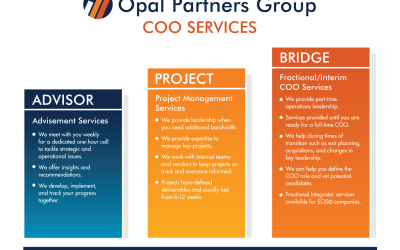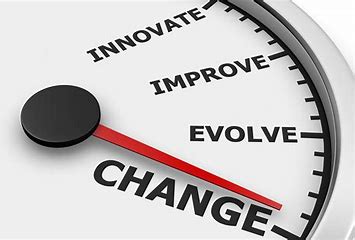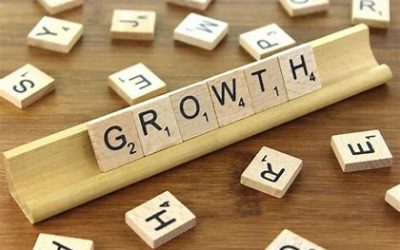"They're a well-coached team."If you watch college football (or your team sport of choice), you've heard this assessment before, most likely talking about a winning team. What does that look like? - Every position on the team knows their role. - They know the...
INSIGHTS
Thoughts on strategy and operations from a Fractional COO
The End
“Begin with the end in mind.” Sometimes “The End” is a scary thing to think about. Not always – the end of a bad situation or rough period of time can be something we look forward to. But often the simple uncertainty of something coming to a close is enough to cause...
Lessons from sports
We learn a lot as kids that we forget or ignore when it comes to our jobs and businesses. Watching a youth baseball game this weekend, I saw a team of nine year old kids model how we can be better at work. What lessons from sports can we apply to running a business?...
Cash in the bank
Having cash in the bank doesn't mean your business is making money. I've worked with many business owners who closely manage their cash flow and bank account balances. That's great. I do the same thing both for my personal and business accounts. Unfortunately, some...
Owning versus Mastering Your Tools
There is a huge difference between possessing and being able to use tools effectively. One of my friends bought a new set of golf clubs. This is nothing new – he does that every couple of years. It prompted a mutual friend to sarcastically comment, “you have the best...
Act now
The hill was more than I bargained for. It was a struggle and I should have realized earlier that is was time to act now. I had all kinds of excuses: the weather was bad. I didn’t have time. It could wait another day. I had other plans. No, I wasn’t hiking up a...
You don’t have all the answers
It’s lonely at the top. We’ve created a myth of the confident CEO or business owner who has all the answers. Deep down, you know you don't have all the answers. The truth: no one does. CEOs of larger businesses may have a proven executive team who can act as a...
Learning about business from sports
On a Saturday morning walk, I witnessed something so common we ignore the lessons it teaches – a tennis match. On the face of it, it was nothing extraordinary. Three matches, three courts, and twelve players. No umpire, no coach, no scoreboard, and no announcer. ...
What were you made to do?
Each one of us is wonderfully and uniquely made. We were made for something purposeful. Are you doing what you were made to do? This question applies equally to your personal life and your work life. No one else has the same mix of gifts, skills, education,...
High-Performing Teams Require Trust
Do you trust your employees? A better question is whether they trust you. High-performing teams require trust at all levels of the organization. A lack of trust limits innovation and collaboration. It keeps good ideas, good processes, and good people from becoming...
A Kayaker’s View of Strategy and Tactics
I was not moving, stuck against a rock and fighting the current. It took all the effort I had to make progress. My choices were to figure out a new approach to moving my kayak or getting out and admitting defeat. I finally leveraged my way into open water. In that...
What’s your company’s DNA?
In our bodies, our DNA is the genetic code that makes us unique individuals. It contains all the instructions needed to build a complex, living, breathing organism. DNA is the master of each cell and is passed on through successive generations. Our DNA determines...
It’s time to change – Your Business 2.0
The Brady Bunch sang "when it's time to change, then it's time to change, from who you are into what you're gonna be." How is your business going to change AFTER the COVID-19 crisis and things begin to look a little more normal? You've been forced to learn, adapt, and...
The power to influence or direct behavior or events
People like to be in it, no one likes to be called out of it, and Janet Jackson even wrote a song about it. What is it? Control. It’s natural to want control - to be in command of your life, your destiny, your job, your customers. And we all realize that there are...
Can you afford to grow? Can you afford not to?
Growth: Can you afford it? "Grow or die!" is a common, well-accepted business principal. Businesses must innovate, stay relevant, seek new customers, add locations, and offer new products. But growth brings its own challenges. You have more products/services to...
They’re watching you
It’s true- you have influence. People notice your actions and your words. If you are a leader – at work, at home, in the community – in any capacity, people do pay attention to what you do and what you say. Every interaction or observation can leave a lasting...
Simple habits to make you more productive
How can you be more successful? I’ve read a number of blogs and articles recently about how successful people start their day or the habits they follow. As I reflected on the insights in those articles, two things became apparent. First, people want to implement...
Are your employees engaged?
According to a Gallup report, only 34% of US employees are actively engaged in their jobs. Gallup defines "engaged" as "involved in, enthusiastic about and committed to their work and workplace." What about the other 66%? 13% are "actively disengaged," and a...
Creating Clarity
It's true - inquiring minds do want to know, if you are talking about the people who make your business run every day. They crave clarity. I was reminded of this working with a client recently on some operational challenges. The client, who uses EOS, said during our...
The Silver Bullet
Are you searching for a software solution that will transform your business? Or maybe your company is just one great hire from kicking it into another gear. Perhaps you are on the verge of implementing a new program rally your team. You are hoping for a silver bullet....
Growth: The Good, the Bad, and The Ugly
It’s a safe bet that if you do a quick internet search on business priorities that increasing topline revenue, improving sales performance, and increasing company value will show up in the top results. Growth matters. To misquote Gordon Gekko: growth is good. Growth...
Why? Why not?
These may be the two most important - and least-asked - questions. “Why?” makes you think about purpose. “Why not?” opens you up to new possibilities. Let’s start with why. The answer to this question identifies the reason behind a decision or an action. It is...
Return on…Resources?
We all know what Return on Investments, or Equity, or Assets are but they may not tell the full story. You need to get all you can from all your resources. What is your Return on Resources? Return on Resources??? You started and built your business on an idea, and...
Your business strategy is incomplete. Or just wrong.
Let me clarify -- wrong for YOUR business. Your strategy should be as unique as you are. If you can delete just a few key words and your plan is unidentifiable as yours, it may not be the strategy you need. Strategy doesn't begin with deciding what steps you will...
Three Elements for a Strong Business Strategy
There are three essential elements to a good corporate strategy: 1. Know yourself. You have to know who you are and why your company exists. Everyone needs to be part of a bigger purpose and reason to come to work for you. It's the DNA of your company. As...
Reach your goals
The calendar has flipped to a new year, and that means one thing: businesses and individuals have set goals and made resolutions, all with good intentions. But good intentions alone won't get you to your goals. People innately want something to strive for, something...
Your business is growing….why don’t you feel like you are winning?
Your business is growing. You've got a great product or service, you know your customers, and you've assembled a stellar team. But something has changed. Profitability has slipped, tasks take longer to complete than they should, or your team is frustrated. What's...
Ready to take your first step towards breaking through to a new level of performance?
Then let’s hop on a call and see if System & Soul is right for you.




























